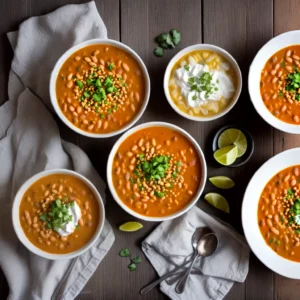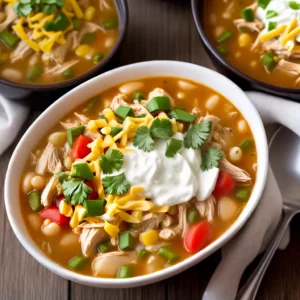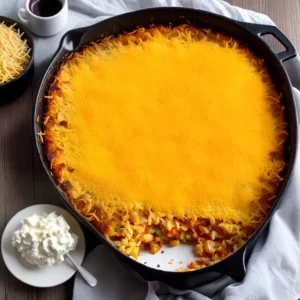How Many Ounces in a Bottle of Wine
Are you wondering how many ounces are in a bottle of wine? If so, this comprehensive measurement conversion guide will provide all the information you need, from standard bottle sizes to serving measurements.
Key Takeaways – How Many Ounces in a Bottle of Wine:
- The standard 750 ml bottle of wine holds approximately 25 fluid ounces, which is equivalent to five glasses of wine.
- Other wine bottle sizes include 187 ml, 200 ml, 250 ml, 375 ml, 1.5 L, 2.25 L, and more.
- A typical glass of wine is 5 fl oz, but serving sizes can vary based on the type of wine.
- Fortified wines may have a serving size of 1.5-2 oz, dessert wines have a serving size of 3 oz, sparkling wines have a serving size of 4-4.5 oz, high alcohol wines have a serving size of 4.5-5 oz, and low alcohol wines have a serving size of 6-11 oz.
- Knowing the conversion from milliliters to ounces (1 ml is equal to 0.03 oz) can be helpful for party-planning purposes and ensuring you have enough wine for everyone.
Understanding Wine Bottle Sizes and Measurements
Wine bottles come in various sizes, with each size having a specific amount of ounces. From typical bottle sizes like splits and magnums to larger formats like jeroboams and nebuchadnezzars, understanding the measurements of wine bottles is essential for wine enthusiasts.
For example, a typical wine bottle holds 750 ml or approximately 25 fluid ounces of wine. This is equivalent to five standard glasses of wine. However, it’s important to note that not all wine bottles are the same size. Some restaurants may serve smaller or larger glass sizes, such as 4 ounces or 6-8 ounces, depending on their preferences.
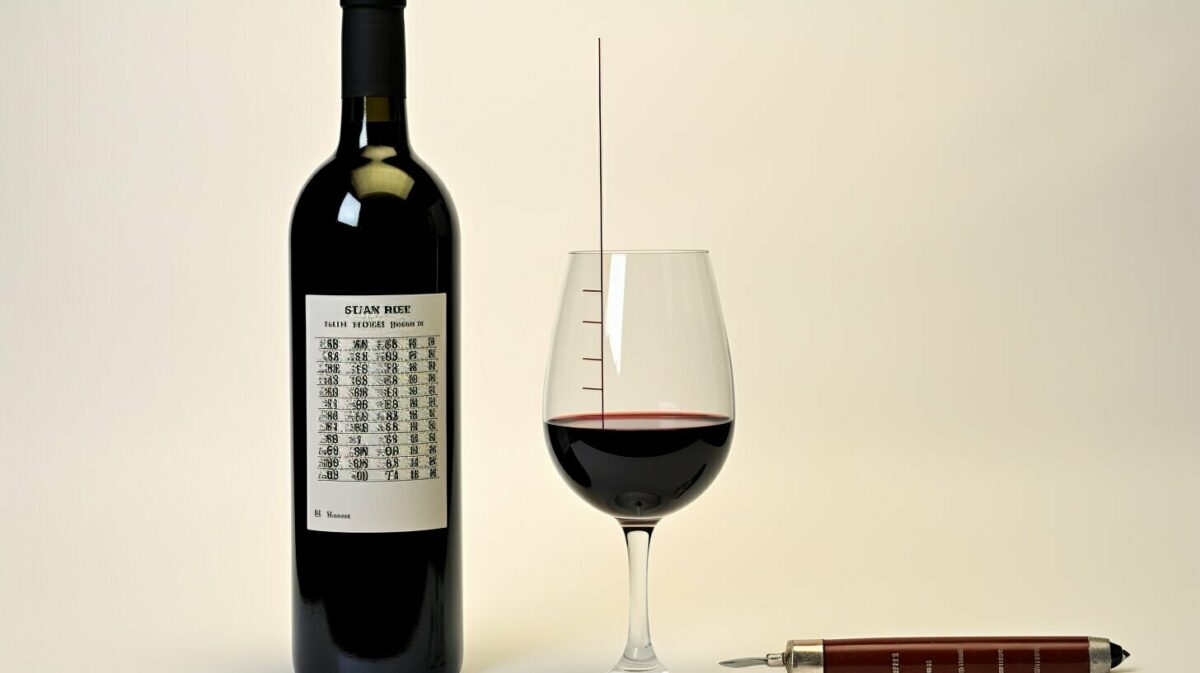
In Ancient Rome, the most common size wine vessel was the gallon. It wasn’t until 1979 that the United States adopted the metric system for liquor and wine bottles. This adoption aligned the standard wine bottle size with Europe, making it 750 ml. Other wine bottle sizes include 187 ml, 200 ml, 250 ml, 375 ml, 1.5 L, 2.25 L, and more. These different sizes cater to various occasions and preferences.
Understanding wine bottle measurements is not only useful for purchasing the right amount of wine but also for serving and enjoying wine in the appropriate quantities. Whether you’re hosting a party, having a quiet dinner, or enjoying a single serving, knowing the size and ounces of different wine bottles can help ensure you have the right amount for everyone.
| Wine Bottle Size | Ounces | Glasses (5 oz each) |
|---|---|---|
| Split | 6.3 oz | 1.26 |
| Half | 12.7 oz | 2.54 |
| Standard (750 ml) | 25.4 oz | 5.08 |
| Magnum | 50.8 oz | 10.16 |
| Jeroboam | 101.6 oz | 20.32 |
| Methuselah | 202.4 oz | 40.48 |
| Salmanazar | 303.6 oz | 60.72 |
| Nebuchadnezzar | 605.2 oz | 121.04 |
The Standard Wine Bottle Size and Serving Measurements
The most common wine bottle size is the standard 750 ml, which holds approximately 25 fluid ounces. However, it’s important to note that different types of wines may have varying serving measurements, depending on their sweetness, varietal, and style.
For sweet wines, such as ports and dessert wines, a smaller serving size is typically recommended to savor the rich flavors. A serving of 1.5-2 ounces is often recommended for fortified wines, while dessert wines may have a serving size of 3 ounces.
When it comes to sparkling wines, like champagne, a serving size of 4-4.5 ounces is common to fully enjoy the effervescence and delicate flavors. High alcohol wines, such as bold reds or fortified varietals, often have a recommended serving size of 4.5-5 ounces to account for their higher alcohol content.
In contrast, lighter wines like crisp whites and refreshing roses may have a larger serving size of 6-11 ounces to fully appreciate their delicate aromas and flavors. It’s important to consider the alcohol content, varietal, and personal preferences when serving and enjoying different types of wines.
Wine Serving Size Recommendations:
- Sweet wines (ports, dessert wines): 1.5-2 ounces
- Sparkling wines (champagne): 4-4.5 ounces
- High alcohol wines (bold reds, fortified varietals): 4.5-5 ounces
- Lighter wines (crisp whites, refreshing roses): 6-11 ounces

It’s important to remember that these serving size recommendations are just guidelines, and personal preferences may vary. Whether you’re hosting a dinner party, celebrating a special occasion, or simply enjoying a glass of wine, understanding the different serving measurements can enhance your wine experience.
Now that you know the standard wine bottle size and serving measurements, you can confidently select the right amount of wine for any occasion.
Wine Bottle Sizes and Conversions
In addition to the standard 750 ml bottle, there are various wine bottle sizes that can be converted into ounces, making them suitable for different occasions or preferences. Whether you’re hosting a party, having a quiet dinner, or enjoying a single serving, understanding the different wine bottle sizes and their conversions can help ensure you have the right amount of wine for your needs.
For larger gatherings or parties, opting for a larger format bottle can be a convenient choice. These sizes, such as 1.5 L or 2.25 L, can equate to around 50 to 75 fluid ounces, providing ample servings for your guests. On the other hand, if you’re planning a more intimate dinner, a 375 ml bottle, equivalent to approximately 12.6 ounces, can be the perfect choice to accompany your meal.
It’s important to note that wine bottle sizes can vary depending on the region and the type of wine. However, having a general understanding of the conversions can help you plan accordingly. Below is a conversion chart that displays some common wine bottle sizes and their equivalent ounces:
| Wine Bottle Size | Milliliters (ml) | Ounces (oz) |
|---|---|---|
| Standard | 750 | 25.4 |
| Split | 187 | 6.3 |
| Half-Bottle | 375 | 12.6 |
| Magnum | 1,500 | 50.7 |
Understanding wine bottle sizes and their conversions allows you to make informed decisions when purchasing and serving wine. Whether you’re hosting a lively party or enjoying a quiet dinner for two, having the right size bottle ensures that everyone can savor the flavors of the wine in the perfect serving amounts.
The Perfect Serving Size
When it comes to serving wine, it’s essential to consider the appropriate portions for different types of wines. While a typical glass of wine is around 5 fluid ounces, serving sizes can vary based on the specific wine. Fortified wines, such as sherry or port, may have smaller serving sizes, usually around 1.5 to 2 ounces. Dessert wines are also typically served in smaller quantities of around 3 ounces.
On the other hand, sparkling wines have slightly larger servings to accommodate the festive bubbles. A serving size for sparkling wine is typically around 4 to 4.5 ounces. If you’re enjoying a high alcohol content wine, such as a bold red or rich fortified wine, the serving size can be between 4.5 to 5 ounces. For lighter wines with lower alcohol content, like some white or rosé varietals, serving sizes can range from 6 to 11 ounces.
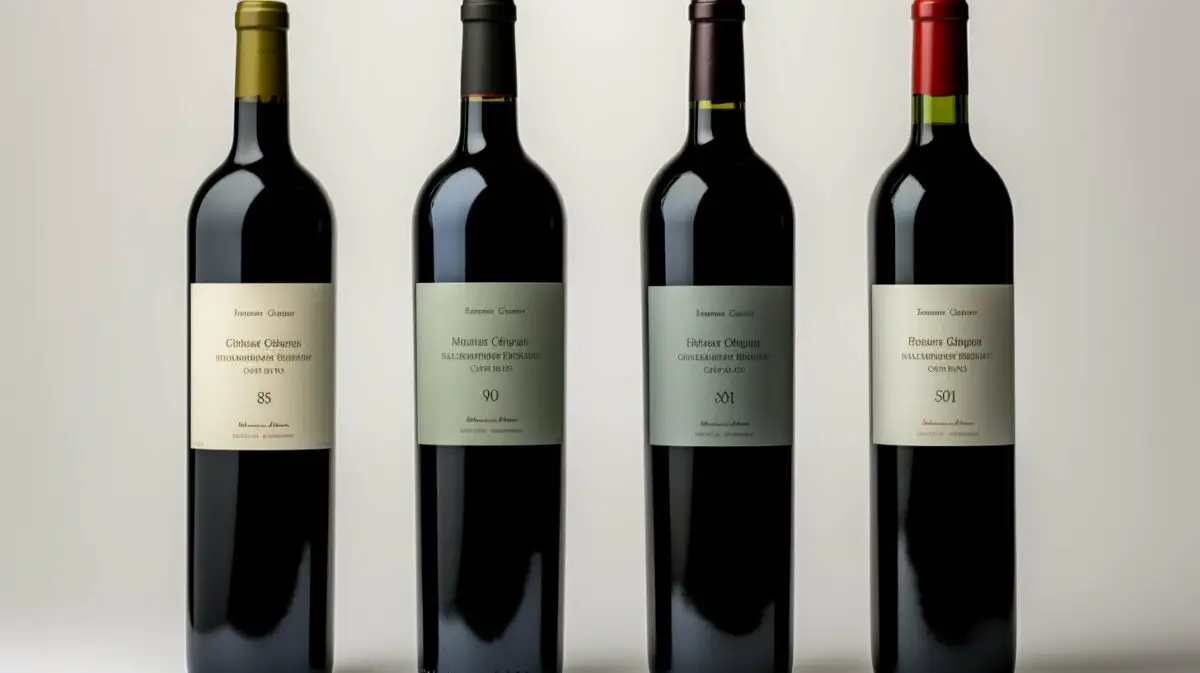
Having a good understanding of wine bottle sizes, their conversions, and the appropriate serving sizes for different types of wines allows you to create memorable wine experiences for yourself and your guests. So whether you’re hosting a grand party, planning a romantic dinner, or simply enjoying a single glass, knowing the right wine bottle size and serving size will enhance your overall enjoyment.
The History and Evolution of Wine Bottle Sizes
The evolution of wine bottle sizes dates back to ancient times, and understanding the history behind these sizes can enhance your appreciation for wine collecting, aging, and storage. In Ancient Rome, wine was stored and transported in large vessels known as amphorae. These amphorae varied in size, with the most common being the gallon-sized vessel. As winemaking techniques developed and wine production expanded, smaller bottles became necessary for ease of handling and storage.
Fast forward to 1979 when the United States adopted the metric system for liquor and wine bottles. This decision aligns the US standard wine bottle size with Europe, which is 750 ml or approximately 25 fluid ounces. This standard size has become widely accepted and is the most commonly used bottle size in the wine industry. However, it’s important to note that there are various other bottle sizes available, ranging from small splits of 187 ml to larger formats like 1.5 liters and even 2.25 liters.

The Metric System Adoption in the United States
The adoption of the metric system in the US has had a significant impact on wine bottle sizes. Not only did it bring the standard bottle size in line with European standards, but it also provided a standardized measurement system for wine enthusiasts and collectors. This allows for easier comparison and understanding of wine volumes across different bottles and brands.
| Wine Bottle Size | Milliliters | Ounces |
|---|---|---|
| Standard (750 ml) | 750 ml | 25.36 oz |
| Split (187 ml) | 187 ml | 6.31 oz |
| Half (375 ml) | 375 ml | 12.68 oz |
| Magnum (1.5 L) | 1500 ml | 50.72 oz |
Having a basic understanding of wine bottle sizes and their conversions is not only useful for wine enthusiasts but also for anyone planning a gathering or event. It ensures that you have enough wine for everyone to enjoy and adds an extra touch of elegance to the occasion.
Wine Bottle Size Conversion Chart
To help you understand the different wine bottle sizes and their corresponding ounces, refer to the following conversion chart:
| Wine Bottle Size | Milliliters (ml) | Ounces (oz) |
|---|---|---|
| 187 ml | 187 | 6.3 |
| 200 ml | 200 | 6.8 |
| 250 ml | 250 | 8.5 |
| 375 ml | 375 | 12.7 |
| 750 ml | 750 | 25.4 |
| 1.5 L | 1500 | 50.7 |
| 2.25 L | 2250 | 76.1 |
As you can see from the chart, wine bottles come in various sizes ranging from 187 ml to 2.25 L. The standard 750 ml wine bottle holds approximately 25.4 ounces, which is equivalent to five glasses of wine. It’s important to note that serving sizes may vary, so it’s always a good idea to check the specific recommendations for the type of wine you’re serving.

Understanding the conversion from milliliters to ounces can be useful for party-planning purposes or simply to ensure you have enough wine for everyone. To convert milliliters to ounces, simply multiply the number of milliliters by 0.03. For example, 750 ml is equal to 25.4 ounces. This conversion can help you estimate the number of bottles needed for your gathering and ensure that you have the right amount of wine on hand.
Wine Glass Sizes and Serving Measurements
Wine glasses come in various sizes, with the standard glass size usually being around 5 fluid ounces. However, depending on the type of wine, the serving measurements may differ. It’s important to understand the appropriate glass size for different wines to fully enjoy their unique flavors and aromas.
Here are the serving measurements for different types of wines:
- Dessert wines: 1.5-2 ounces
- Sparkling wines: 4-4.5 ounces
- High alcohol wines: 4.5-5 ounces
- Low alcohol wines: 6-11 ounces
These measurements may vary slightly depending on personal preference and the occasion. It’s always a good idea to consult with your sommelier or wine expert for specific recommendations.
Why Glass Size Matters
The size and shape of the wine glass can greatly impact your wine-drinking experience. A larger glass allows for more surface area, allowing the aromas to develop, while a smaller glass concentrates the aromas. For example, sparkling wines are typically served in tall, narrow flutes to preserve their effervescence, while red wines are often served in wider glasses to encourage oxidation and enhance aroma.
It’s also worth noting that serving sizes can vary in different countries and cultures. In the United States, a standard glass of wine is typically 5 fluid ounces, while in Europe, it’s often closer to 4-5 ounces. When hosting or attending events, it’s helpful to be mindful of cultural differences and individual preferences.

Understanding wine glass sizes and serving measurements is essential for enjoying wine to its fullest. Different types of wines require different glass sizes to enhance their unique characteristics. Whether you’re sipping a dessert wine or enjoying a sparkling wine, selecting the right glass size can elevate your wine-drinking experience. So next time you pour yourself a glass, remember to choose the appropriate glass size and savor every sip.
| Type of Wine | Serving Size |
|---|---|
| Dessert wines | 1.5-2 ounces |
| Sparkling wines | 4-4.5 ounces |
| High alcohol wines | 4.5-5 ounces |
| Low alcohol wines | 6-11 ounces |
The Influence of Ancient Rome on Wine Measurements
In Ancient Rome, the most common wine vessel size was the gallon, which had a significant influence on wine measurements and continues to be referenced in modern times. The gallon, derived from the Latin word “gallas,” was a standard unit of measurement for liquids, including wine. This measurement system was widely used across the Roman Empire and played a crucial role in the production, distribution, and consumption of wine.
The use of gallons in Ancient Rome for wine vessels established a standard size that helped ensure consistency in wine production and trade. While the exact volume of a Roman gallon varied over time, it generally ranged from 4.5 to 6.5 liters (or approximately 119 to 173 fluid ounces). This standardized measurement facilitated easier transport and storage of wine, enabling the expansion of Roman winemaking across vast territories.
To this day, we continue to use the gallon as a point of reference, even though its exact volume has changed over time in different regions. In the United States, a gallon is equal to 128 fluid ounces, while in the United Kingdom, it is approximately 160 fluid ounces. The influence of Ancient Rome on wine measurements is a testament to the enduring legacy of their sophisticated wine culture.
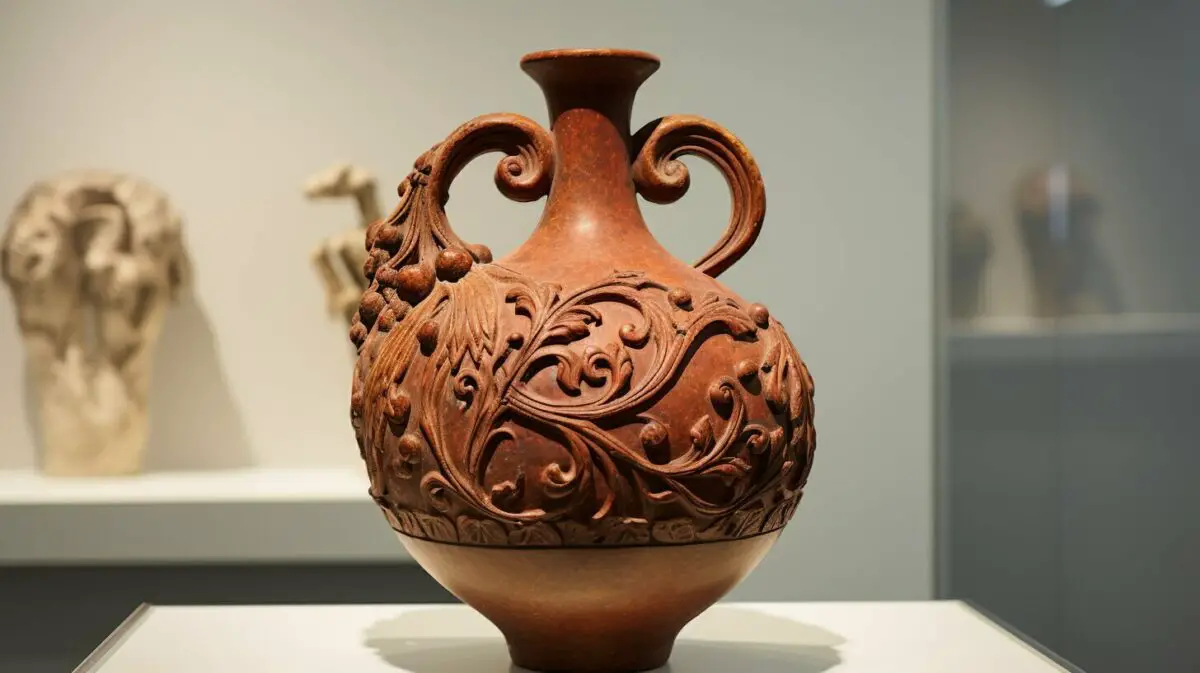
| Roman Liquid Measurement Units | |
|---|---|
| 1 Sextarius | 1/2 Liter (16.9 fl oz) |
| 1 Congius | 6 Sextarii (3 Liters or 101.4 fl oz) |
| 1 Urna | 12 Congii (36 Liters or 1216.8 fl oz) |
The Romans’ use of the gallon as a wine vessel size demonstrates their meticulous approach to measurement and their appreciation for the art of winemaking. This historical connection between Ancient Rome and wine measurements enriches our understanding of the longstanding cultural significance that wine holds in our society.
The Metric System Adoption in the United States
In 1979, the United States adopted the metric system for wine and liquor bottles, aligning with the standard wine bottle size of 750 ml that is commonly used in Europe. This change allowed for better compatibility and consistency in the global wine industry. The 750 ml bottle, equivalent to approximately 25 fluid ounces, became the standard size for wine bottles in the US, ensuring easier measurement and conversion for both producers and consumers.
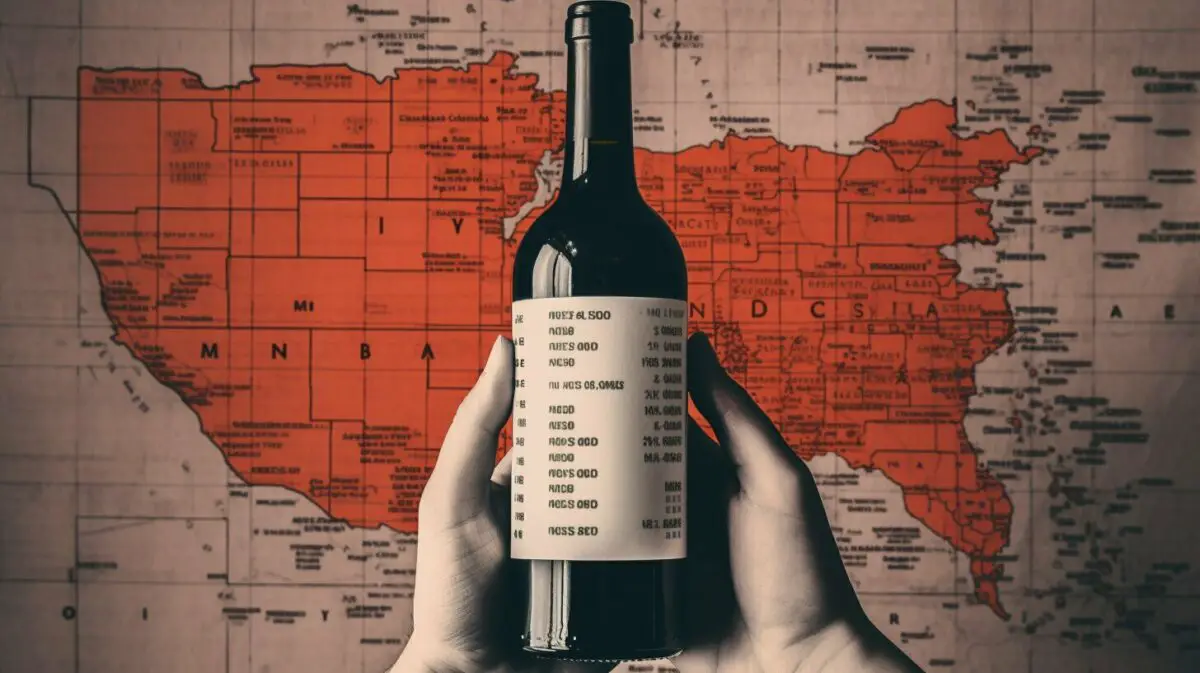
Previously, the US had used different sizes for wine bottles, making it confusing for both domestic and international trade. By adopting the metric system, the US was able to streamline its wine industry and align with international standards. This change also helped to simplify the measurement and labeling process, making it easier for consumers to understand the volume of wine they were purchasing.
Today, the standard 750 ml wine bottle is widely used in the US and is the most common size found on store shelves. However, smaller and larger bottle sizes are also available, catering to different needs and occasions. These variations include 187 ml, 200 ml, 250 ml, 375 ml, 1.5 L, 2.25 L, and more. Whether you’re hosting a small gathering or a large party, there is a wine bottle size that suits your needs.
| Wine Bottle Size | Equivalent Ounces |
|---|---|
| 187 ml | 6.3 oz |
| 200 ml | 6.8 oz |
| 250 ml | 8.5 oz |
| 375 ml | 12.7 oz |
| 750 ml | 25.4 oz |
| 1.5 L | 50.7 oz |
| 2.25 L | 76 oz |
Knowing the standard wine bottle size and its equivalents in ounces can help you plan and estimate the amount of wine you’ll need for any occasion. Whether you’re hosting a formal dinner party or a casual get-together, understanding wine bottle measurements and serving sizes ensures that you have enough wine to satisfy all your guests.
Serving Sizes for Different Types of Wine
Depending on the type of wine you’re enjoying, the recommended serving sizes can vary. Here are the general guidelines for serving sizes of different wine types:
Fortified Wines
Fortified wines, such as Port or Sherry, are typically served in smaller quantities due to their higher alcohol content. The recommended serving size for fortified wines is 1.5-2 ounces. This smaller serving size allows you to fully appreciate the rich flavors and intensity of these fortified wines.
Dessert Wines
Dessert wines, like Sauternes or Ice Wine, are often enjoyed after a meal as a sweet treat. The recommended serving size for dessert wines is 3 ounces. This larger serving allows you to savor the decadent flavors and enjoy the wine’s natural sweetness.
Sparkling Wines
When it comes to sparkling wines, such as Champagne or Prosecco, the recommended serving size is around 4-4.5 ounces. This size allows you to fully enjoy the effervescence and celebrate special moments with a glass of bubbly.
High Alcohol Wines
High alcohol wines, like Zinfandel or Syrah, often have bolder flavors and higher alcohol content. The recommended serving size for these wines is 4.5-5 ounces. This larger serving size allows you to fully experience the complexity and richness of these wines.
Low Alcohol Wines
On the other hand, low alcohol wines, such as Riesling or Vinho Verde, are typically lighter in flavor and alcohol content. The recommended serving size for low alcohol wines is 6-11 ounces. This larger serving size allows you to sip and savor these refreshing wines without overwhelming your palate.
Remember, these serving sizes are just general guidelines, and personal preferences may vary. It’s always important to drink responsibly and in moderation. So whether you’re enjoying a glass of full-bodied red or a crisp white, pour yourself an appropriate serving size and savor the moment.

When it comes to party-planning or simply ensuring you have enough wine on hand, understanding the conversion from milliliters to ounces can be helpful. One milliliter is equal to approximately 0.03 ounces. This means that if you have a bottle of wine that contains 750 milliliters, it would be equivalent to around 25 fluid ounces. So, if you’re serving 5-ounce glasses of wine, you can expect to get about five servings from a standard 750 ml bottle.
Knowing the milliliter to ounce conversion can also be useful when determining the amount of wine needed for different occasions or when comparing wine bottle sizes. For example, a 1.5 liter bottle of wine contains 1500 milliliters, which is equal to approximately 50 ounces. This larger size bottle would provide 10 servings based on a 5-ounce pour.
Take a look at the table below for a quick reference guide on milliliter to ounce conversions:
| Milliliters (ml) | Ounces (oz) |
|---|---|
| 1 ml | 0.03 oz |
| 187 ml | 6.3 oz |
| 200 ml | 6.8 oz |
| 250 ml | 8.5 oz |
| 375 ml | 12.7 oz |
| 750 ml | 25.4 oz |
| 1.5 L | 50.7 oz |
Having a good understanding of milliliters to ounces conversion can come in handy whether you’re hosting a small gathering or planning a larger event. It allows you to accurately measure and serve wine, ensuring everyone has a generous pour to enjoy.
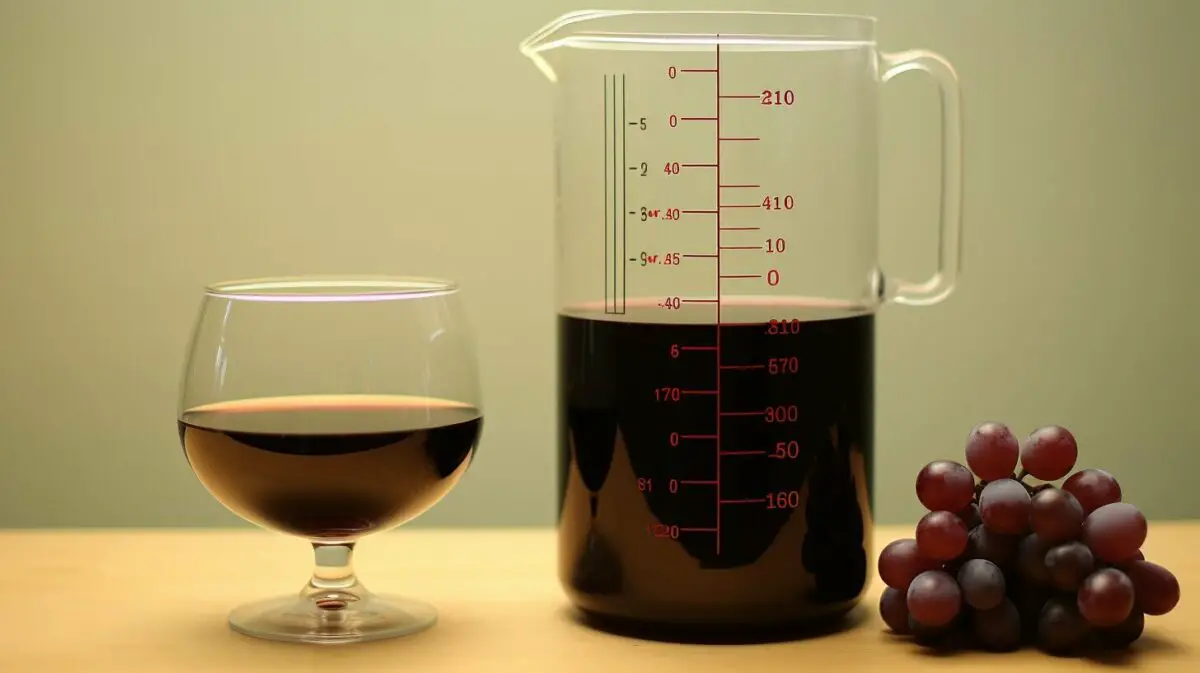
Ensuring You Have Enough Wine for Everyone
To ensure you have enough wine to cater to your guests, it’s helpful to estimate the number of bottles needed for your event, taking into consideration standard bottle sizes and serving measurements. The standard wine bottle size is 750 ml, which is equal to approximately 25 fluid ounces. This size typically holds around five glasses of wine, assuming a standard serving size of 5 fluid ounces per glass.
However, it’s important to consider that not all wine bottles are the same size. There are various bottle sizes available, such as 187 ml, 200 ml, 250 ml, 375 ml, 1.5 L, and more. If you’re planning a smaller gathering or need wine for individual servings, you may opt for smaller bottle sizes. On the other hand, if you’re hosting a larger event, it may be more practical to purchase wine in 1.5 L or even larger formats.
To make it easier to estimate the number of bottles needed, you can refer to the following table:
| Wine Bottle Size | Approximate Number of Glasses (5 oz per glass) |
|---|---|
| 187 ml | 1 |
| 200 ml | 1 |
| 250 ml | 1.3 |
| 375 ml | 2.5 |
| 750 ml | 5 |
| 1.5 L | 10 |
Remember, these are approximate numbers and may vary based on the size of wine glasses and individual serving preferences. It’s always a good idea to have some extra bottles on hand to account for unexpected guests or those who may prefer a larger pour. By estimating the number of bottles needed and considering the serving measurements, you can ensure that everyone at your event will have enough wine to enjoy.
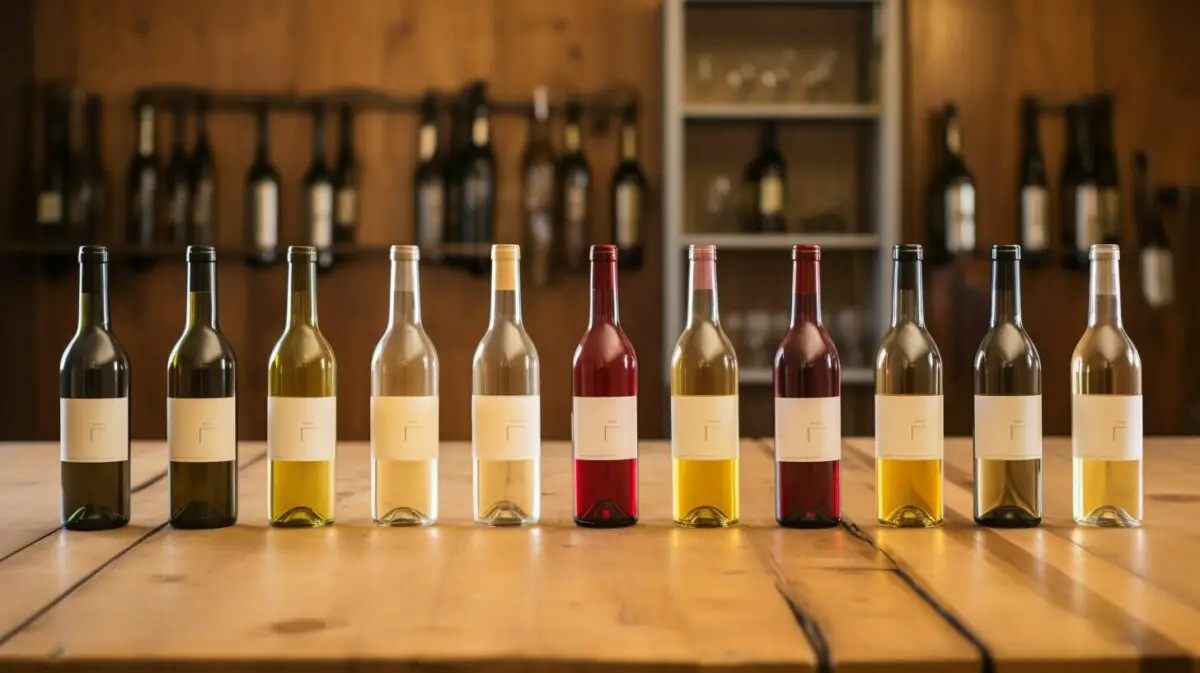
Variations in Wine Bottle Shapes and Sizes
Wine bottles not only come in different sizes but also in various shapes that are specific to certain wine regions or varietals. Understanding these variations adds to the overall wine experience.
In the world of wine, the shape and size of the bottle can play a role in the aging process and the overall taste of the wine. For example, the flute-shaped bottle is commonly associated with sparkling wines, as its tall and narrow design helps to preserve the carbonation and bubbles. On the other hand, the Bordeaux bottle is characterized by its straight sides and high shoulders, making it ideal for red wines that require aging.
Another notable variation is the Burgundy bottle, which has sloping shoulders and a wider body, particularly suited for delicate and aromatic red and white wines. These bottle shapes, along with others such as the imperials and balthazars, are designed to accommodate specific needs in terms of wine aging and presentation.

| Wine Bottle Size | Fluid Ounces |
|---|---|
| Standard (750 ml) | 25 |
| Split (187 ml) | 6.3 |
| Half Bottle (375 ml) | 12.7 |
| Magnum (1.5 L) | 50.7 |
| Jeroboam (3 L) | 101.4 |
| Methuselah (6 L) | 202.8 |
These are just a few examples of the wide range of wine bottle shapes and sizes available. Whether you’re a wine enthusiast or simply enjoy a glass every now and then, understanding the different bottle variations can enhance your appreciation of the wine itself. So next time you’re savoring a glass of your favorite vintage, take a moment to appreciate the craftsmanship and thought that goes into the design of the wine bottle.
In Conclusion – How Many Ounces in a Bottle of Wine
Understanding the ounces in a bottle of wine, along with the different sizes and serving measurements, is essential for wine lovers and enthusiasts alike. Cheers to enjoying wine with the confidence of knowing exactly how much is in your glass!
The standard 750 ml bottle of wine holds approximately 25 fluid ounces, which is equivalent to five glasses of wine. However, not all wine bottles are the same size. Some restaurants may serve smaller or larger glass sizes, such as 4 oz or 6-8 oz. It’s important to be aware of these variations to ensure you’re pouring and consuming the right amount of wine.
Did you know that in Ancient Rome, the most common size wine vessel was the gallon? Over time, wine measurements and bottle sizes have evolved. In 1979, the US adopted the metric system for liquor and wine bottles, aligning the standard wine bottle size with Europe at 750 ml. This adoption allows for easier conversion and consistency in wine bottle sizes.
If you’re hosting a gathering or planning a party, it’s useful to know the different wine bottle sizes available. In addition to the standard 750 ml bottle, you can find 187 ml, 200 ml, 250 ml, 375 ml, 1.5 L, 2.25 L, and more. By estimating the number of bottles needed based on the occasion and the serving sizes, you can ensure that everyone has enough wine to enjoy.
Remember, there are variations in serving sizes depending on the type of wine. While a typical glass of wine is 5 fl oz, fortified wines may have a serving size of 1.5-2 oz, dessert wines have a serving size of 3 oz, sparkling wines have a serving size of 4-4.5 oz, high alcohol wines have a serving size of 4.5-5 oz, and low alcohol wines have a serving size of 6-11 oz. Knowing these measurements will enhance your wine experience and allow you to enjoy each glass to the fullest.
Lastly, understanding the conversion from milliliters to ounces (1 ml is equal to 0.03 oz) can be helpful for party-planning purposes and ensuring you have enough wine for everyone. Whether you’re hosting a small gathering or a larger event, being able to accurately measure and serve wine will ensure that everyone’s glass is filled just right.
So, next time you raise your glass, do so with the knowledge of the ounces in each bottle, the various sizes available, and the appropriate serving measurements. Cheers to enjoying wine with confidence and savoring every sip!
FAQ – How Many Ounces in a Bottle of Wine
Q: How many ounces are in a standard 750ml bottle of wine?
A: The standard 750ml bottle of wine holds approximately 25 fluid ounces, equivalent to five glasses of wine.
Q: Are all wine bottles the same size?
A: No, not all wine bottles are the same size. Some restaurants may serve smaller or larger glass sizes, such as 4 oz or 6-8 oz.
Q: What was the most common size wine vessel in Ancient Rome?
A: In Ancient Rome, the most common size wine vessel was the gallon.
Q: When did the US adopt the metric system for liquor and wine bottles?
A: In 1979, the US adopted the metric system for liquor and wine bottles, making the standard wine bottle size 750ml, like in Europe.
Q: What are some other wine bottle sizes?
A: Other wine bottle sizes include 187 ml, 200 ml, 250 ml, 375 ml, 1.5 L, 2.25 L, and more.
Q: How many ounces are in 1 shot?
A: There are 1.5 ounces in 1 shot.
Q: What is a typical serving size for a glass of wine?
A: A typical glass of wine is 5 fluid ounces, but this can vary based on the type of wine.
Q: What are the serving sizes for different types of wines?
A: Serving sizes can vary for different types of wines. Fortified wines may have a serving size of 1.5-2 ounces, dessert wines have a serving size of 3 ounces, sparkling wines have a serving size of 4-4.5 ounces, high alcohol wines have a serving size of 4.5-5 ounces, and low alcohol wines have a serving size of 6-11 ounces.
Q: How do I convert milliliters to ounces for wine measurements?
A: For party-planning purposes, 1 milliliter is equal to approximately 0.03 ounces.
Q: How can I ensure I have enough wine for everyone?
A: It is useful to know the conversion from milliliters to ounces and estimate the number of bottles needed based on standard bottle sizes (e.g., 750ml, 187ml, 200ml, 250ml, 375ml, 1.5L).
Our Friends:
Related Recipes:
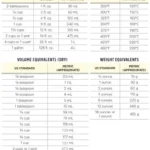 How Many Cups Are in a Liter: Unlocking the Mystery
How Many Cups Are in a Liter: Unlocking the Mystery
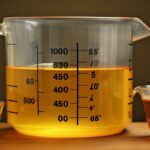 How Many Ounces Are in 750 ml? (Measurement Conversion Guide)
How Many Ounces Are in 750 ml? (Measurement Conversion Guide)
 How Many Ounces in a Shot Glass? (Perfect Measurement Conversion Guide)
How Many Ounces in a Shot Glass? (Perfect Measurement Conversion Guide)
 How Many Ounces Are in a Pint? (Perfect Measurement Conversion Guide)
How Many Ounces Are in a Pint? (Perfect Measurement Conversion Guide)
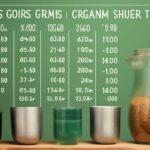 How Many Grams Are in an Ounce? (Perfect Measurement Conversion Guide)
How Many Grams Are in an Ounce? (Perfect Measurement Conversion Guide)
 How Many Beers in a Keg? (Measurement Conversion Guide)
How Many Beers in a Keg? (Measurement Conversion Guide)
 How Many Fluid Ounces in a Cup? (Perfect Measurement Conversion Guide)
How Many Fluid Ounces in a Cup? (Perfect Measurement Conversion Guide)
 How Many Ounces Are in a Quart? (Ultimate Measurement Conversion Guide)
How Many Ounces Are in a Quart? (Ultimate Measurement Conversion Guide)




